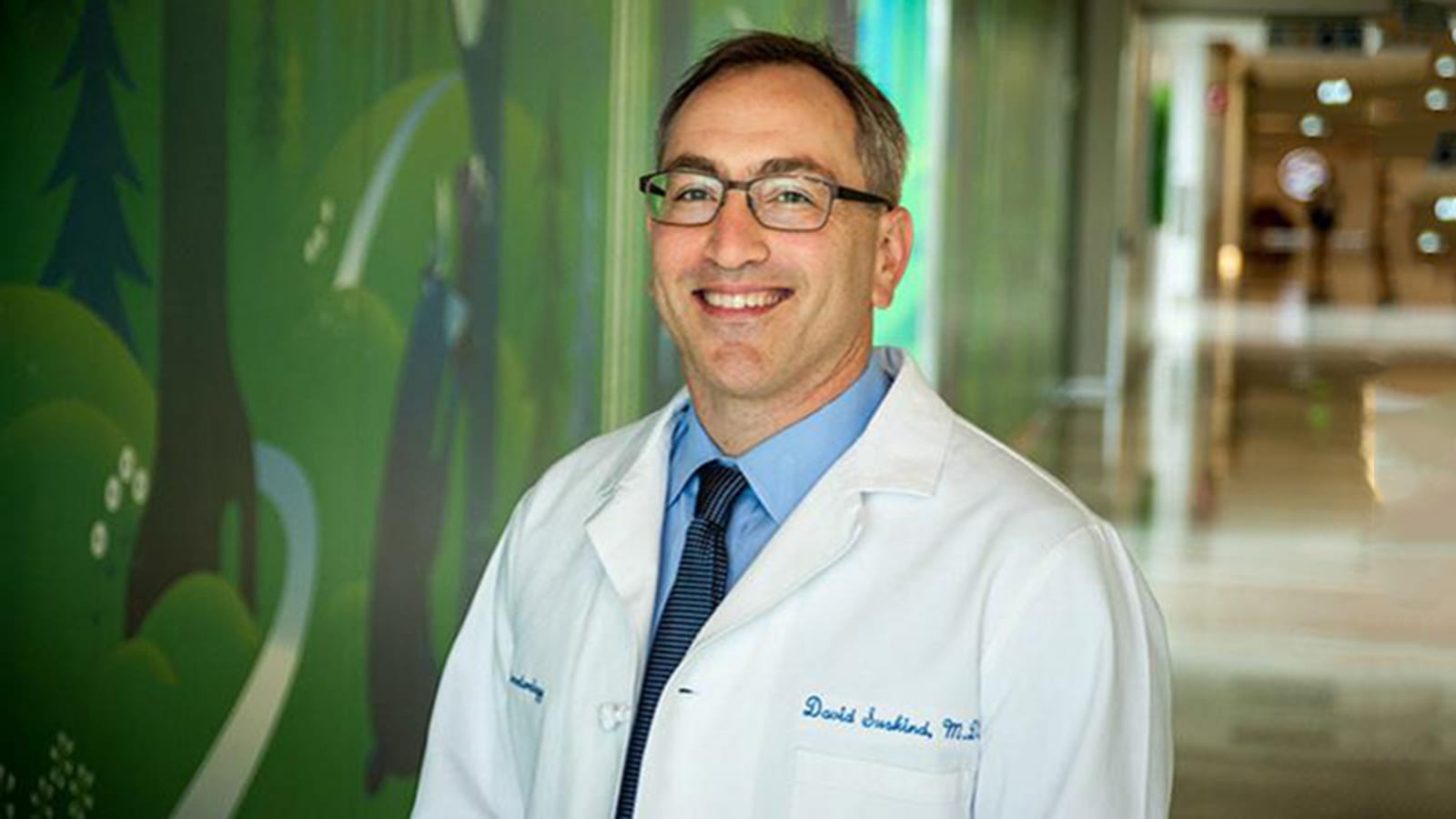Community research for a healthy microbiome
by David L. Suskind, M.D.
This article was originally published in June 2018

What is community? Is it a group of people living in the same place or having characteristics in common, or a feeling of fellowship, sharing common interests and goals? The story of my research is intertwined with these ideas.
As a pediatric gastroenterologist at Seattle Children’s Hospital, I’m familiar with the pain and anguish inflammatory bowel disease (IBD) inflicts on patients and their families. Innovative and groundbreaking research is a crucial step in improving their lives. My research has focused on the effect of diet on the microbiome and its effect on IBD. The foods we eat are linked to health and well-being but also a community within us, the microbiome, and this is where my research begins.
The microbiome and diet
The microbiome is a community of microorganisms in our gut. It is made up of trillions of cells, including bacteria, fungi, archaea and even viruses. Its diverse bacteria are key to survival. Your microbiome is working hard for you every day. It breaks down your food, produces vitamins, and protects you from harmful infections.
But in many chronic diseases, including IBD, the microbiome is implicated in causing them. To understand this, think of the number of people in our world. There are plenty of compassionate, helpful people, and there are unhelpful and hurtful people, as well. If the number of unhelpful people increases, the planet can be a harder place to live. The same holds true for the microbiome: if the number of bad, unhelpful bacteria increases, they can trigger disease. This is what some of my colleagues and I think occurs in IBD.
One of the biggest drivers in the change of the microbiome is the foods we eat.
The potential of using whole foods to treat disease came to us from a Seattle family whose child had tried dietary therapy as treatment and came to our clinic, swearing it had worked wonders. This diet, the Specific Carbohydrate Diet (SCD), was created by a physician in the 1930s to treat celiac disease but largely had been forgotten by the medical world. Interaction with this family began my research odyssey.
I was fascinated by the possibility that using a targeted diet could treat IBD, but there was little clinical data to support this claim. I needed to connect with the community around me to make this research and potential treatment a reality and, for that, I needed evidence.
We had no funding for this research, so we had to focus on chart reviews. I was able to identify seven patients who had used this SCD and not only resolved all their symptoms but more importantly, resolved the inflammation on their laboratory tests. Although this study was small and retrospective, it was the first of its kind.
We let the Pacific Northwest community know we would support dietary therapy for patients who wanted to use it. Our patient population shared their stories, challenges and successes and, as the community grew, so did our research. We continued to report patient successes and began prospective studies of the diet’s effect on patients with the active disease, as well as its effect on their microbiome.
More research needed
While the research still is experimental, our findings support the encouraging data of our initial studies and illustrate how diet changes the microbiome for patients. These studies would not have been possible without the passionate and committed community within and outside of Seattle Children’s Hospital. The community rallied behind our research and gave support to families. Generous benefactors made sure we could do everything we needed to make our research happen. We continue to research variations of this diet, but our research also has spurred national studies.
As the research pushes forward, so do the support systems to help patients and families incorporate this diet into their treatment strategy. We have developed a website that helps families integrate the diet into their life (nimbal.org) as well as support group/cooking classes. As always, however, consult with your health practitioner before adopting a new diet.
Food is much more than mere nutrition. Food also is medicine, linked not only to our health and well-being but also to the community around us and the community within us, the microbiome. Be kind to all your communities, feed them well and be well fed.
The Specific Carbohydrate Diet
The SCD essentially is free of grains, lactose and refined sugars. It also prohibits starchy vegetables (potatoes, yams, parsnips, seaweed products), some legumes (garbanzos, soybeans, fava, mung and bean sprouts), and fresh dairy or cheese with lactose (mozzarella, ricotta, cottage cheese, cream cheese, feta).
It allows fruit, vegetables, some legumes, meat, poultry, fish, nuts, honey and cheeses aged long enough to eliminate lactose (cheddar, parmesan, jack, swiss and brie). Yogurt is acceptable (and recommended) as long as it is unsweetened, without additives, fermented for more than 24 hours, and produced with SCD-approved strains of bacteria.
PCC recommends consulting your health practitioner before adopting the Specific Carbohydrate Diet or any new diet.
Dr. David L. Suskind, M.D., is a physician at Seattle Children’s Hospital and a Professor of Pediatrics at the University of Washington. He may be contacted by phone, 206-987-0055.
